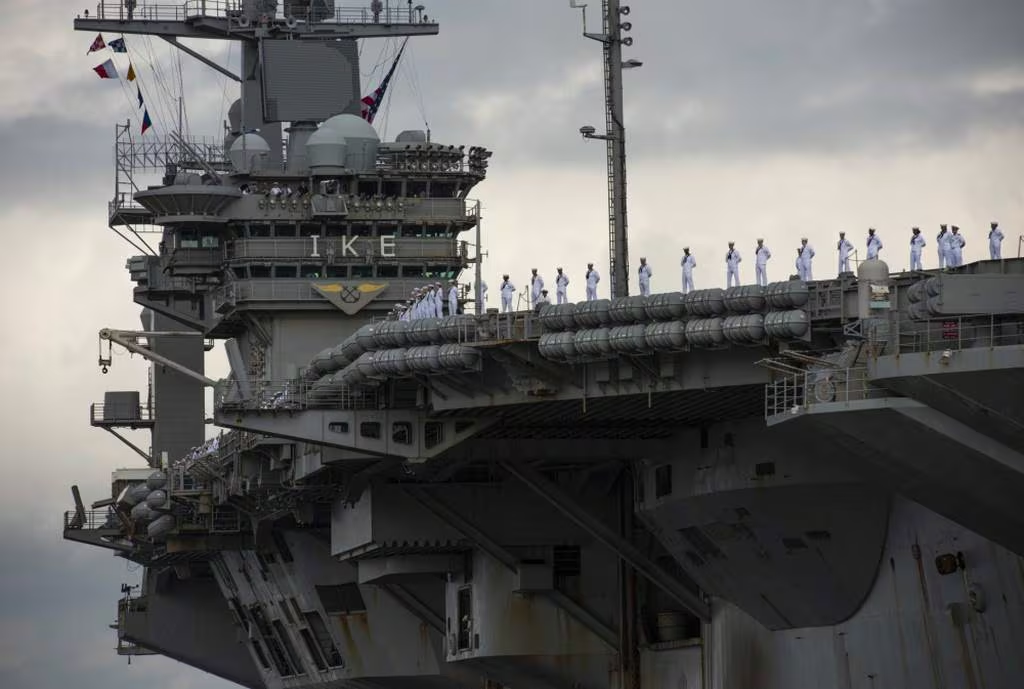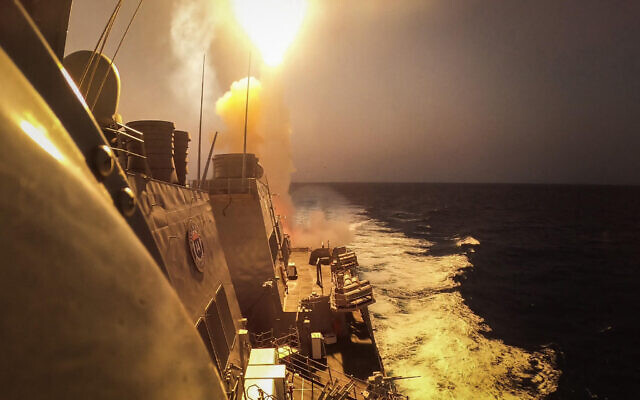Story at a glance…
After a drone strike launched from Yemen struck Tel Aviv over 1,600 km away, Israeli military forces retaliated by bombing the Port of Hodeidah.
Already vulnerable to attacks by northern neighbors Lebanon, it opened a third front in a quickly spiraling regional conflict.
US Naval power is currently being shifted around in the Red Sea, giving the Houthis the opportunity to increase attacks, something the UN has said is happening.
On Sunday, Houthi leader Abdul-Malik al-Houthi spoke of his pride that his controlling faction in Yemen was brought into open conflict with the Israelis after the latter bombed the southern Yemeni port at Hodeidah in strikes that killed 6 people according to local news sources.
The Israeli attack was in retaliation for a drone strike on Tel Aviv which killed 1 and injured 8 last week. It was allegedly the first of some 200 attempts by the Houthis to hit Israel that wasn’t intercepted by either US and UK forces in the Red Sea or Israeli missile defenses.
“Yemeni people are pleased to be in direct confrontation with the Israeli enemy, and they are steadfast and brave people,” al-Houthi said, according to Iran’s Press TV.
Also on Sunday, the Houthi military spokesman Yahya Sarea said Yemen’s “response to the Israeli aggression against our country is inevitably coming and will be huge”.
The timing isn’t ideal for both Israel and their Washington backers, since the 9-month extended deployment of the USS Dwight D. Eisenhower aircraft carrier has finally ended in the month of June after the longest-running sea battle since World War II. Her replacement, the Theodore Roosevelt, is currently in Malaysia on the move towards the Middle East.
Tel Aviv has recently increased tit-for-tat bombings with Hezbollah in Lebanon, with military leaders approving plans for a large invasion of southern Lebanon, which many believe has the potential to be a disastrous operation for the Israeli army. The strike from the Houthis arrived from over 1,600 kilometers away, greater than the distance between Tel Aviv and Tehran. If Israeli military planners truly believe Iran to be supplying and funding all the various Shi’ite irregulars around the region, from the Houthis to the groups in Iraq, then their level of vulnerability just increased by orders of magnitude.
Al-Houthi noted that the US and British bombing campaign in Yemen had done nothing to deter Houthi attacks on commercial shipping in the Red Sea, the Gulf of Aden, and beyond, particularly against Israeli or US shipping. The Houthis, officially called Ansar Allah, state that attacks will continue unless Israel’s genocidal siege on Gaza comes to an end.

A missile to a knife fight
Avoiding hyperbole, there’s something significant in the events surrounding the Eisenhower’s running battle against the Houthis—something reminiscent of the revolution in military affairs that saw aircraft carriers replace battleships as the most important naval asset in World War II.
The Houthis are launching rockets and drones that in some cases cost five figures at ships that cost 1,000 times as much. In an article by AP published on June 19th, reporters claim that the sailors have been able to see incoming Houthi-launched missiles seconds before they are destroyed by the ship’s defensive strikes, and that many are succumbing to stress from 9 months of continuous battle stations with few breaks.
Furthermore, the ship has had to defer maintenance in order to stay in the volatile region past two deployment extensions.
“These ships are floating around in seawater. They’re steel, and they require a lot of maintenance. And when you run them past red lines, when you run them past scheduled maintenance activities, you have to pay those off somewhere down the line,” Rear Adm. Marc Miguez—who commands Carrier Strike Group Two, which includes the Eisenhower and supporting ships, told AP.
Recently, the Navy disclosed the costs of the carrier’s 9-month stint in terms of money and munitions. Nearly 800 missiles and interceptors were launched countering Houthi strikes into the Red Sea and potentially into Israel as well. Business Insider reports that this figure is over 250 units higher than what Navy officials disclosed in May.
“Ike” as it’s affectionately called, launched 135 Tomahawk cruise missiles against land-based targets in Yemen, and another 155 Standard Missile 3s as interceptors to hit Houthi airborne armaments. The planes on board scrambled 14,000 times, firing 420 air-to-surface weapons and nearly 60 air-to-air missiles, the former used to hit the Houthis boats and aquatic drones, and the latter to intercept their missiles.
By April, this amounted to over $1 billion in munitions, and since then it has fired hundreds more, potentially doubling that figure, which doesn’t include the costs of the nuclear fuel used for propulsion. By contrast, the Houthis are firing truck or shoulder-mounted missiles and drones that will likely cost less than $100,000 per unit, and indeed they may have fought the whole battle against Ike at a tiny fraction of a cost; and they aren’t done.
Now, a series of weeks lay ahead where there is no capital ship posed to intercept Houthi attacks targeting shipping and Israel until the Theodore Roosevelt can cross the Indian Ocean. British ships are still guarding the Red Sea, as are at least two US destroyers, but it’s unclear whether they will be able to effectively counter the Houthi’s volume of fire.
A three-front war
Speaking on that volume of fire, the UN Special Envoy to Yemen, Hans Grundberg, one of the diplomats most responsible for ending the disastrous war between Yemen and Saudi Arabia which led to the deaths of 377,000 people by official estimates, said that the threat to international shipping is growing.
“I remain deeply concerned about the continued targeting of international navigation in the Red Sea and its surrounding waterways,” Grundberg said. “Recent developments suggest that the threat against international shipping is increasing in scope and precision”.
“It is alarming that there are no signs of de-escalation, let alone a solution,” Grundberg continued.
The Houthi drone strike that reached Tel Aviv had a sophisticated course, traveling south through Egypt before turning eastward in the Mediterranean to hit the country from its western airspace. In May, Director of National Intelligence Avril Haines told reporters that the Houthis have a domestic production line for drones and missiles and don’t rely on Iran for aid.
US officials have warned that the number of rockets and missiles stockpiled by Hezbollah to the north of Israel would be enough to overwhelm Israeli air defenses. To open a third front against the Houthis is to further expose and overextend that air defense.
Iranian national security spokesmen have said that they would have no choice but to support Ansar Allah and Hezbollah “by all means” in the event of an Israeli attack on southern Lebanon. While it’s unlikely this aid would amount to substantially more than what Hezbollah can already afford to bring to bear, it may allow the Houthis to further increase their rate of fire across the Red Sea, at commercial shipping, at Israel, or even directly at US ships.
Would some of those missiles or drones being destroyed seconds before colliding with the deck of the Eisenhower get through if they were being launched 20% more often? All these scenarios would result in a significant escalation of the conflict in the region, as the extremely Zionist Trump Administration would no doubt respond aggressively, while it’s likely a Harris Administration would follow the pattern of past Democratic Administrations, especially those with women in senior foreign policy and national security positions, of enacting extremely hawkish policies to demonstrate strength and resolve in the face of Republican criticism. WaL
We Humbly Ask For Your Support—Follow the link here to see all the ways, monetary and non-monetary.
PICTURED ABOVE: The Arleigh Burke-class guided-missile destroyer USS Carney fires against a combination of Houthi missiles and unmanned aerial vehicles in the Red Sea. PC: Aaron Lau, handout from the US Navy.



